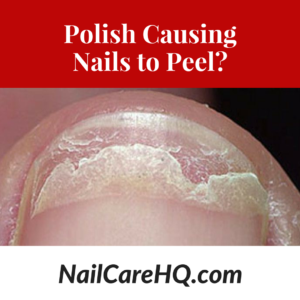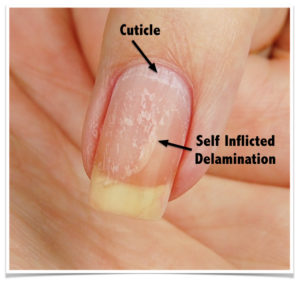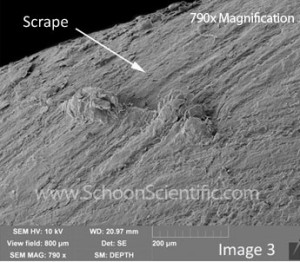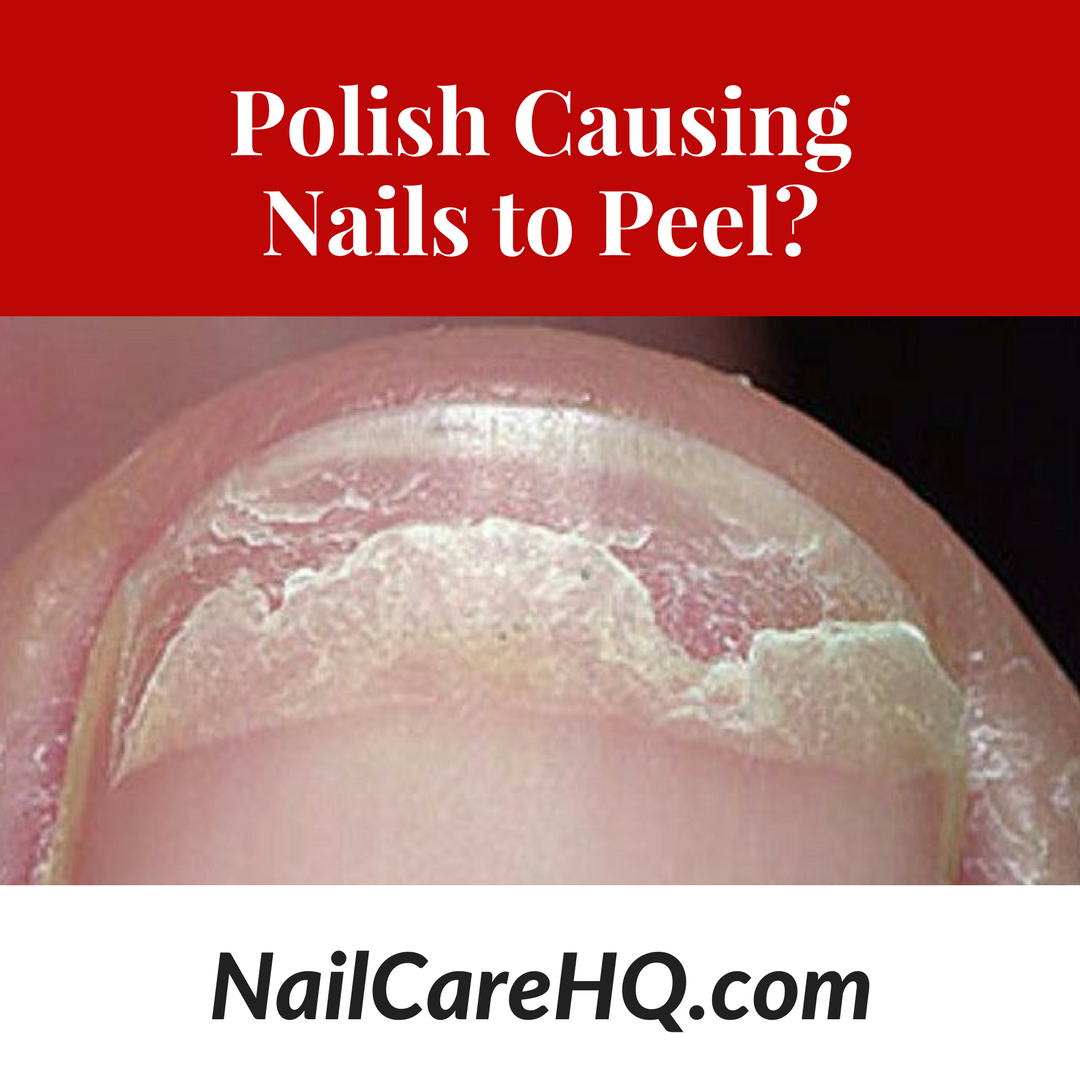PEELING NAILS
by Doug Schoon
 Peeling Nails
Peeling Nails
Trying to figure out why your nails are peeling, and how to stop it, can be very frustrating.
In this article, you will learn…
- How peeling off polish can damage the nail plate
- The proper way to remove nail enhancements
- Thirteen (13) solutions to help prevent peeling
This article about peeling nails is an excerpt from my 74th episode (available June 2017) of Face to Face with Doug Schoon video series.
ASK DOUG
My nails are very strong and healthy, and they can grow very long, but as soon as I use nail polish they become brittle and start peeling. They continue to do so until all “old nail” has grown out and the whole nail is replaced.
I have tried 5-free, 7-free and water based polish, and I have also tried different removers. But no matter what, my nails get ruined every time I use polish. Do you have any suggestions of what I should do? ~Eva
ANSWER
Eva, here are my top suggestions for addressing nail plate surface peeling.
Peeling Off Polish
Never peel nail polish from your nail plate. This will weaken the surface layers.
These weakened surface layers will eventually peel away when they reach the free edge. It may be months later, so you might have forgotten what you did.
 For example; if you peel nail polish from your nails in May, expect the cell layers on the top-side of the free edge will peel in until September when those damaged nail cells finally grow off the free edge.
For example; if you peel nail polish from your nails in May, expect the cell layers on the top-side of the free edge will peel in until September when those damaged nail cells finally grow off the free edge.
Doing this repeatedly can lead to a state of constant surface peeling.
Some nail coatings adhere to the nail plate better the longer you wear them.
Ana’s photo to the right is a perfect example. She peeled her well bonded polish off while watching a movie.
It took 4 months for the damage to grow out.
Long wearing nail polish has greater adhesion, so these are more likely to harm the surface when forcibly peeled off.
Proper Removal
 Gently remove all nail coatings, without the use of any force, e.g. no peeling, scraping, biting, etc.
Gently remove all nail coatings, without the use of any force, e.g. no peeling, scraping, biting, etc.
The is no such thing as gentle peeling or scraping, so don’t fool yourself into thinking you “lightly scrape” or “peel carefully”.
This is extremely important when removing soak-off gel polish.
It can take up to 30 minutes to completely dissolve the coating!
I have more electron microscope examples in my article about removing gel polish properly.
Water Damage
Keep your hands out of water.
Each time you saturate the nail plate, surface layers swell apart and separate.
Repeated soaking and drying cycles can weaken the bond between the upper layer and lower layers.
Washing Hands
Don’t wash your hands too often. Yes, you can wash your hands too much!
More than ten (10) times a day can be hard on nails and skin. Many wash their hands 20 times a day or more.
That’s just too much.
Soaps, cleansers and detergents can eventually strip away substances that help hold the surface cells to the underlying cells and this can lead to peeling.
The same can occur when nails are exposed to cleaning solvents.
Free Polish?
It doesn’t matter if the polish is 5-free or 99-free, that’s just “marketing” and doesn’t say how good or how safe a nail polish is.
Don’t think this is the problem or the solution to peeling nail plates.
Quality Counts
Buy high quality products. Less expensive nail polish are less expensive for a reason. They often use inferior ingredients or are poorly formulated.
Nail Length
Keep nails shorter.
The longer the nail plate, the more flexible the free edge, the more likely the polish will peel. This is especially true for those with thin, flexible nail plates.
Wrap Edges
Wrap the free edge by wrapping the base and topcoat around the free edge to the underside and give it some extra protection.
But, avoid skin contact as much as possible. Repeated contact to the tissue can cause skin irritation.
Gloves
Treat your nails like jewels. Don’t use them as tools.
Wear gloves when digging or working with your hands. This is especially important when working with cleaning supplies.
Sun Exposure
Protect nails from the sun.
The nail plate has a high natural SPF, so the nail bed is protected from UV exposure, but that means the upper layers absorb the UV.
Long periods of excessive sunlight can weaken surface layers and cause them to come apart.
Buffing Destroys
Don’t over file or buff the nail plate.
Too much filing or buffing thins the nail and it is much harder for polish to adhere to thin nails, than thicker nails.
Don’t try to fill away so-called “ridges”. The nail plate can’t grow ridges. The thinner, weaker part of the nail plate is the grooves.
Therefore, filing the plate smooth reduces and thins the entire nail plate to the match the thinness of the deepest groove.
That’s trouble waiting to happen—so don’t do it.
Use Nail Oil
Nail oils can help reduce surface brittleness and help toughen the bonds between the surface and lower layers of nail cells, but make sure to remove surface oils before apply any nail coating.
Nail oils also absorb into the plate to make it more resistant to excessive water absorption.
Polish Removers
Solvents can remove surface oils and may also leach out substances that help to cement nail cell layers together.
Occasional (once a week) use of solvent-containing polish removers won’t have much effect on normal nails.
But they may have a noticeable effect on plates that have weakened adhesion due to other factors described above.
Allergies?
Peeling nail plates are never a sign of allergic reactions.
The nail plate is not living and does NOT have an immune system, so allergic reactions are not possible.
Exceptions?
Eva, there are always weird things that happen that don’t fall within the norm, which means they don’t apply to most people.
It may be possible that your nail layers are barely held together and solvents (acetone) are disrupting the weak bonds that exist.
Make sure that you are following all my suggestions above and you will have beautiful, healthy nails that make you proud.
Learn More
For more nail care education, you can subscribe to my video series at www.FacetoFaceWithDougSchoon.com
To receive 25% off the subscription rate, enter “nailcarehq” in the discount code box at the bottom of the page.
If you liked this article . . . please share!

